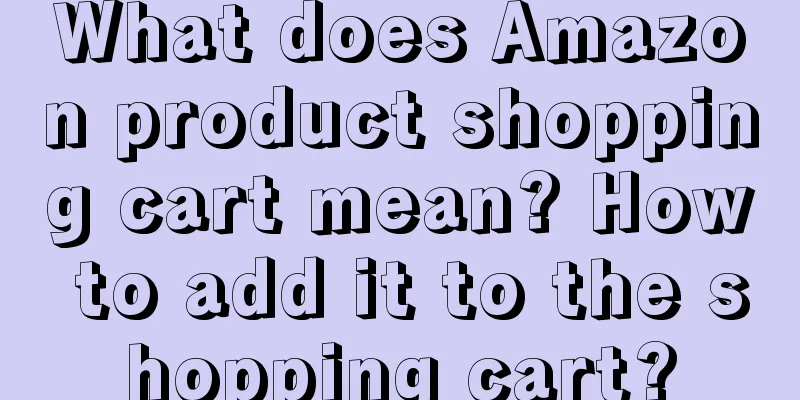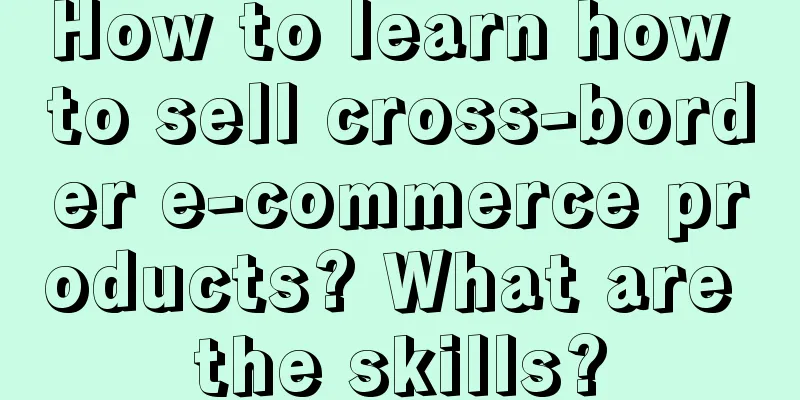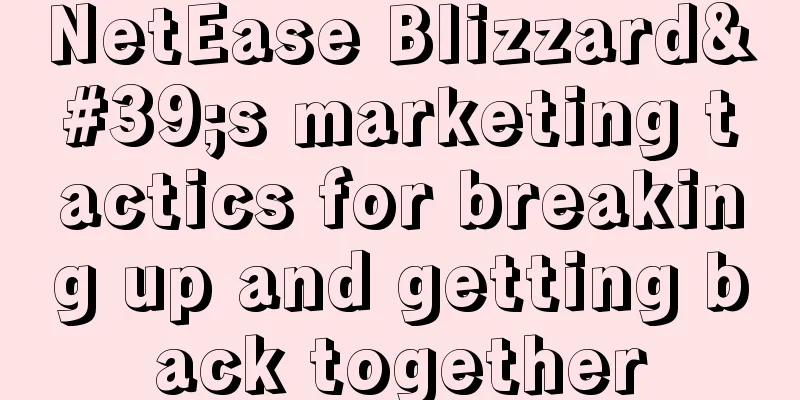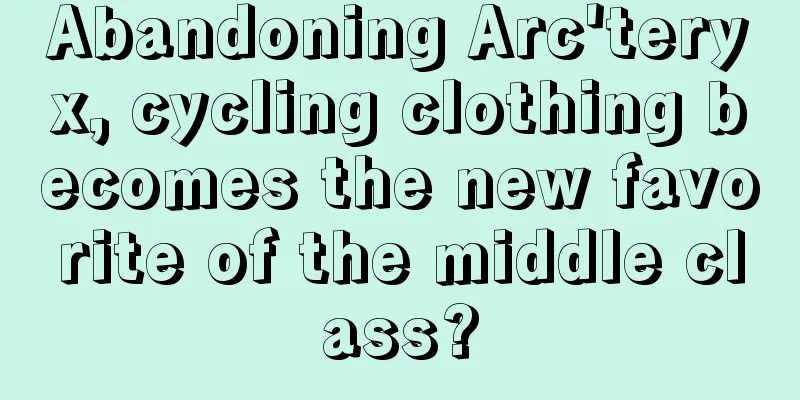What are the differences between cross-border e-commerce B2B and B2C? Which one is better?
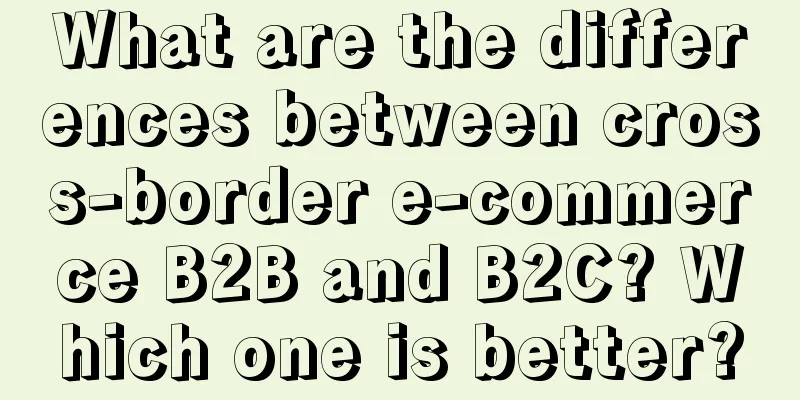
|
Cross-border e-commerce actually has many operating models. When you are doing cross-border e-commerce, you can take a look and learn about it. The B2B model is more familiar to everyone. What are the differences between cross-border e-commerce B2B and B2C? What are the differences between cross-border e-commerce B2B and B2C? 1. What is B2B? B2B (Business To Business) is the exchange of products, services and information between businesses or between enterprises through the Internet. B2B provides a large shopping platform where buyers can find all sellers and all the product information they have, and further publish purchasing needs according to their own special needs. Of course, the most important thing is the final transaction between sellers and buyers. 2. What is B2C? B2C (Business To Customer) is a type of electronic information commerce in China that is classified according to the transaction service object, that is, the e-commerce market transaction between merchants and consumer needs. This online shopping model can greatly improve the transaction management efficiency of both parties. 3. Comparative analysis of B2B and B2C The most essential difference between B2B and B2C is the different consumer groups of corporate customers, which can be simply understood as wholesale (B2B) and retail (B2C). The B2B market consists of the procurement, production and sale of products and services, while the cross-border market consists of the procurement, production and sale of products and services. The B2C market is the process of providing products and services to individual consumers. In the B2B market, consumers’ purchasing decisions are not determined by one person, but by the consumers themselves. The purchasing behavior of consumers in the B2B model is relatively complex, including corporate environment, group and individual influencing factors, while the B2C consumer purchase service model is relatively simple to develop because it is a consumer’s personal information behavior. Compared with B2B, B2C is a more advanced model. In the traditional model, B2B needs to go through many cumbersome links from the factory to the final arrival of the consumer. Each link has a corresponding cost, which leads to the final price increase. It is also accompanied by information lag and opacity. Cross-border B2C is a more efficient business model, which directly delivers from the factory or seller to the consumer, eliminating all the intermediate links. Everyone is clear about the difference between cross-border e-commerce B2B and B2C. So when choosing to engage in cross-border e-commerce, the different models will have a great impact on everyone's actual profits. You still have to choose a platform and operating model that suits you. Recommended reading: How to cancel a cross-border e-commerce business license? How much does it cost to cancel it? How to register on the Suez cross-border e-commerce platform? Is the Suez platform reliable? Is the suez cross-border e-commerce platform reliable? How is suez cross-border e-commerce? |
<<: How long does it take for US express to clear customs in China? What should I pay attention to?
>>: What is the cost of thc? What is the charging standard?
Recommend
Will delayed delivery from Shopee affect traffic? What happens if delivery is overdue?
After we open a store on Shopee, we need to ship g...
Snacks are very busy, a "Disney" alternative for young people
In the retail consumption arena, Snacks is Busy ha...
Where can I see the Amazon video review pass? Are there any requirements?
When Amazon merchants upload products, they can di...
What are the payment risks of cross-border e-commerce? How to reduce the risks?
With the continuous development of global trade an...
What is the difference between Amazon deactivation and account suspension? Why is it deactivated?
When you use Amazon, you usually need to register ...
Millions of young people who are trying to be poor are being "harvested" by the 9.9 yuan meal package
Unconsciously, the trend of "poor man's m...
Does Amazon require promotion fees? What are the procurement costs?
Merchants who open stores online know that traffic...
What are the essential steps for Amazon beginners?
Amazon is the first stop for most people who trave...
The “A and B” sides of the tea beverage industry: Who is failing? Who is running wild?
The tea beverage industry is facing unprecedented ...
New "Spring Festival Gala Economics": No red envelopes, just want to sell goods?
As the year draws to a close, in addition to Sprin...
Writing copy? The informal kind
In this article, the author introduces four specia...
What is going on with Amazon’s US logistics fee adjustments and discount plans?
Amazon US is one of many sites. There are actually...
iPad Pro's new ad is called the most controversial idea of 2024
The most controversial iPad Pro advertisement in 2...
Quickly use Douwei to grab the "dominant boss"
This year, short dramas are really popular. Howeve...
What does foreign trade ERP mean? What software are there?
There are many people doing e-commerce now. E-comm...
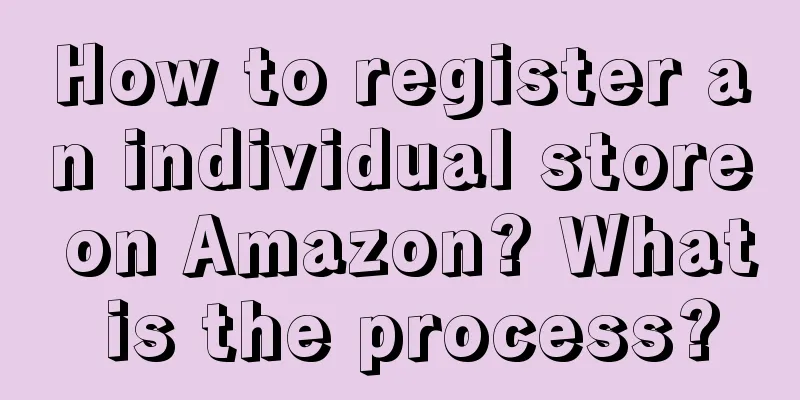
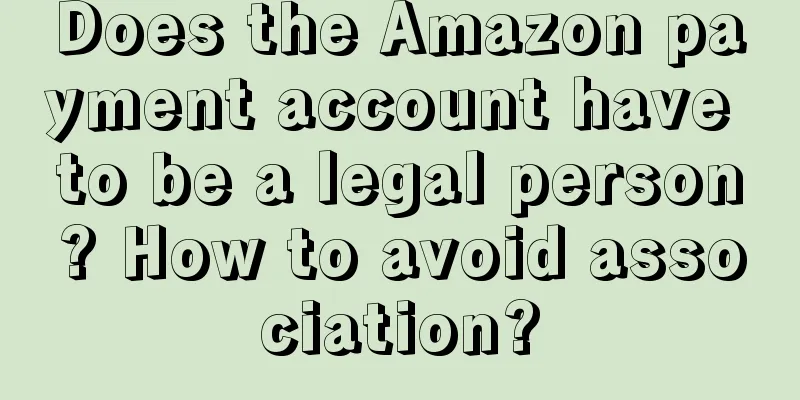
![This is too much, this [operation analysis] idea is really on point](/upload/images/67e6df251523f.webp)
